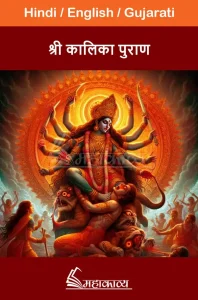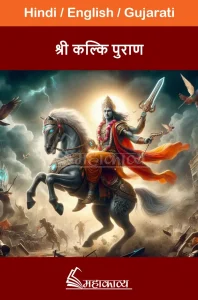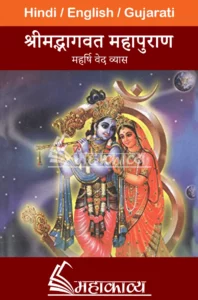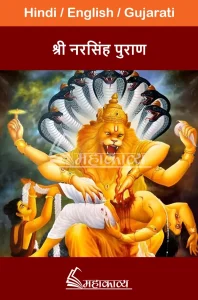Read Padma Purana in English
Padma Purana (Padma Purana in English) is the famous Purana among the 18 Puranas of Hinduism. Maharishi Vedavyad Rishi is the author of this Purana. Veda Vyasa Rishi has written Padma Purana in Sanskrit language. Padma Purana is second in the count of 18 Puranas, and 55,000 verses are found in this Purana and 81,000 verses are found in Skanda Purana. Therefore Padma Purana is ranked second in terms of number of verses also. Padma means lotus flower, because the lotus flower originated from the navel of Lord Vishnu and from it Lord Brahma appeared and created the universe. Brahmaji gave the knowledge as soon as it appeared from the lotus, it is called Padma Purana. In Padma Purana, along with the description of the full glory of Lord Shri Vishnu, the character description of Lord Shri Ram and Shri Krishna is described. In this Purana, the greatness of the pilgrimages of Hindu religion is described as equal to Shaligram and the special glory of Tulsi.
Read here in one click ~ Padma Purana in Hindi
Table of Contents
Toggleintroduction:-
Padma Purana (Padma Purana in English) is a Vaishnava Purana composed by Maharishi Vedavyasa. This Purana has 7 sections, 697 chapters and 55,000 verses. In the Padma Purana, the story of Vamana Avatar, the incarnation of Lord Vishnu, the story of Tuladhar, the Nandi Dhenu anecdote, etc., has been well explained by the legends and stories. In Tuladhar Katha, a complete description of Pativrat Dharma is found. Following are the sections of Padma Purana.
Sections of Padma-Purana:-
1. Creation Block
2. Land Block
3. Heaven’s Circle
4. Brahma Khand
5. Hades
6. Uttar Khand
7. Kriya Yogasar Section
Beginning of Padma Purana:-
The Padma Purana (Padma Purana in English) was first narrated by Brahmaji to Pulastya Rishi and Pulastya Rishi to Bhishma. In the Padma Purana, the entire origin of the universe has been told by Lord Brahma. There are many stories in Padma Purana which are mentioned in other Puranas as well. Padma Purana is a very virtuous and destroyer of sins.
Glory of Tulsi in Padma Purana :-
Or Drishta Nikhilaghasanghshamani Sparshta Vapushpavani.
Roganambhivandita nirsani siktantakatrasini.
Pratyasattividayini Bhagvatah Krishnasya Sanropita.
Nyasta tacharne vimuktfilda tasai tulsayi namah.
Meaning :-
One who destroys all sins by seeing, purifies the body when touched, destroys diseases when worshiped, gives fear to Yamraj even when irrigated with water, when placed near Lord Krishna And on offering at the feet of the Lord, gives the fruit of salvation, salutations to that Tulsi Devi.
The glory of Tulsi is also described in Padma Purana, Brahmavaivarta, Skanda Purana, Bhavishya Purana and Garuda Purana. According to Padma Purana, worship and darshan of Tulsi every day gives freedom from all sins. In this Purana, Tulsi has been called salvation. It is also said in the Padma Purana that the fruit of bathing in all the rivers is attained only by touching the Tulsi leaves. Worshiping Tulsi alone gives the virtue of all rituals.
What is written in Padma Purana?
In Padma Purana, along with the description of the full glory of Lord Shri Vishnu, the character description of Lord Shri Ram and Shri Krishna is described. In this Purana, the greatness of the pilgrimages of Hindu religion is described as equal to Shaligram and the special glory of Tulsi.
How many volumes are there in Padma Purana?
Padma Purana has 7 sections, 697 chapters and 55,000 verses.
What is another name for Padma Purana?
According to Padma Purana, in this Purana, the knowledge of worship, worship, meditation and devotion of Lord Shri Vishnu has been given in detail. Hence the Padma Purana is primarily a Vaishnava Purana.
Remedies of Padma Purana :-
According to Padma Purana, worshiping these three together, Shaligram, Tulsi and Sankh, pleases Lord Vishnu. Fulfills your wish.
According to Padma Purana, keeping lamp, Shivling, Shaligram, conch shell, Tulsi, Rudraksh, flower garland, chanting rosary, Yagyopaveet, all these without giving it easy, causes great sin.
Neither kuryachushkvairani controversy nor paishunam.
Neither samvasetsuchken nor kam vai marmani sparshet.
According to Padma Purana, do not make enmity without any reason, do not condemn anyone, stay away from the person who slanders, do not hurt any creature. By keeping these five distances in your life, the sorrow that comes can be avoided.
Read This Also
Please wait while flipbook is loading. For more related info, FAQs and issues please refer to DearFlip WordPress Flipbook Plugin Help documentation.







